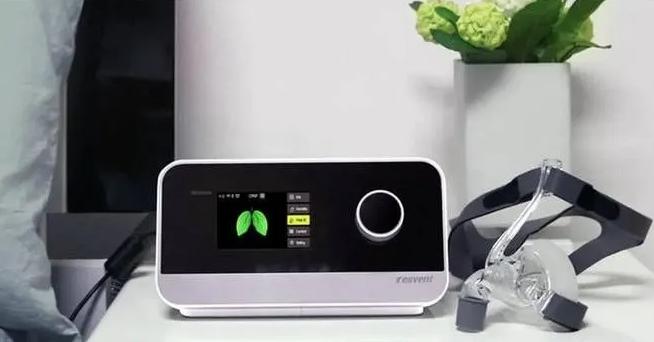Are you curious to know what is IPR on CPAP? You have come to the right place as I am going to tell you everything about IPR on CPAP in a very simple explanation. Without further discussion let’s begin to know what is IPR on CPAP?
What Is IPR On CPAP?
Continuous positive airway pressure (CPAP) therapy is a common treatment for sleep apnea, a condition characterized by interrupted breathing during sleep. CPAP machines deliver a steady flow of pressurized air through a mask, keeping the airway open and allowing for uninterrupted breathing. Within CPAP machines, there is a feature known as IPR, or inspiratory pressure relief, which plays a vital role in enhancing comfort and improving therapy adherence. In this blog post, we will explore what IPR is, how it works, and its benefits for CPAP users.
What Is IPR?
IPR, or inspiratory pressure relief, is a feature found in certain CPAP machines that allows for a reduction in air pressure during inhalation. It provides a temporary decrease in pressure when the user begins to inhale, making it easier to breathe in and out against the flow of air from the machine. This pressure relief helps alleviate any discomfort or resistance that may be experienced during exhalation.
How Does IPR Work?
When a CPAP machine is equipped with IPR, it detects the start of the user’s inhalation through specialized sensors. As the user begins to inhale, the machine briefly decreases the pressure delivered, creating a more natural and comfortable breathing experience. Once the inhalation phase is complete, the machine resumes delivering the prescribed pressure for exhalation. The transition between inhalation and exhalation is smooth and seamless, reducing any potential discomfort or feelings of pressure.
Benefits Of IPR
- Enhanced Comfort: IPR significantly improves comfort during CPAP therapy by reducing the sensation of pressure or resistance during inhalation. This can alleviate any feelings of suffocation or claustrophobia, helping users adapt to and continue their therapy with greater ease.
- Improved Therapy Adherence: By providing a more comfortable breathing experience, IPR can promote better therapy adherence. Users are more likely to consistently use their CPAP machine as recommended, leading to improved treatment outcomes and better management of sleep apnea symptoms.
- Reduced Exhalation Difficulties: Some individuals may experience difficulties exhaling against the constant pressure from a CPAP machine. IPR alleviates this by briefly lowering the pressure during inhalation, allowing for easier exhalation and reducing any feelings of breathlessness or air trapping.
- Customizable Settings: IPR features can often be adjusted to suit individual preferences. Users can fine-tune the level of pressure relief or choose from different settings based on their comfort needs, ensuring a personalized and tailored experience.
Considerations And Consultation
It’s important to note that not all CPAP machines come with IPR functionality. When selecting a CPAP machine, individuals should discuss their preferences and requirements with a healthcare professional or a CPAP equipment provider. They can guide users in choosing a machine that offers the desired comfort features, including IPR, based on individual needs and sleep apnea treatment goals.
Conclusion
IPR, or inspiratory pressure relief, is a valuable feature found in certain CPAP machines. By temporarily reducing the pressure during inhalation, IPR enhances comfort, promotes therapy adherence, and reduces exhalation difficulties for CPAP users. When considering CPAP therapy, individuals should consult with healthcare professionals to determine the most suitable machine with IPR capabilities for their specific needs. With the right equipment and personalized settings, individuals can experience improved comfort and efficacy throughout their sleep apnea treatment journey.
Let’s find some more interesting facts about different topics on Tallestclub
FAQ
What Should IPR Be On CPAP?
For most people, an appropriate CPAP pressure is between 6 and 14 cmH2O, with an average of 10 cmH2O. Your sleep specialist can help you determine what specific level is right for you. Over time, your CPAP device pressure may require adjusting.
How Do I Know If My CPAP Pressure Needs Adjusting?
If you consistently experience discomfort during CPAP therapy, or you are not noticing any improvements in your sleep or health, then your CPAP pressure settings probably need to be adjusted. Persistent fatigue, loud snoring, mask leaks, and difficulty exhaling all indicate suboptimal pressure levels.
How Many Apneas Per Hour Is Normal With CPAP?
CPAP, oral appliances and other sleep apnea treatment options are designed to reduce your AHI, but not necessarily eliminate them. That’s because it’s considered normal for everyone to have up to four apneas an hour. It’s also common if your AHIs vary from night to night.
Is It Illegal To Change CPAP Pressure?
Yes, you must first have a prescription to obtain a CPAP machine – but after you OWN one, you are within your rights to do whatever you please with it, including using it as a leaf blower, running it over with the family car, or… (oh no!) – changing your own pressure settings.
I Have Covered All The Following Queries And Topics In The Above Article
What Is IPR Setting On CPAP
What Is IPR On A CPAP Machine
What Is IPR On Resvent CPAP
What Is The IPR Setting On A CPAP Machine
IPR Exhalation Relief
What Is P Ramp On CPAP
Resvent CPAP IPR Setting
Ibreeze IPR Setting
Resvent CPAP Pressure Adjustment
Resvent Ibreeze IPR
Resvent Ibreeze Setup
Resvent CPAP Problems
What Is IPR On CPAP
How much is the inspiratory pressure at which CPAP is set
What does AI stand for on CPAP
